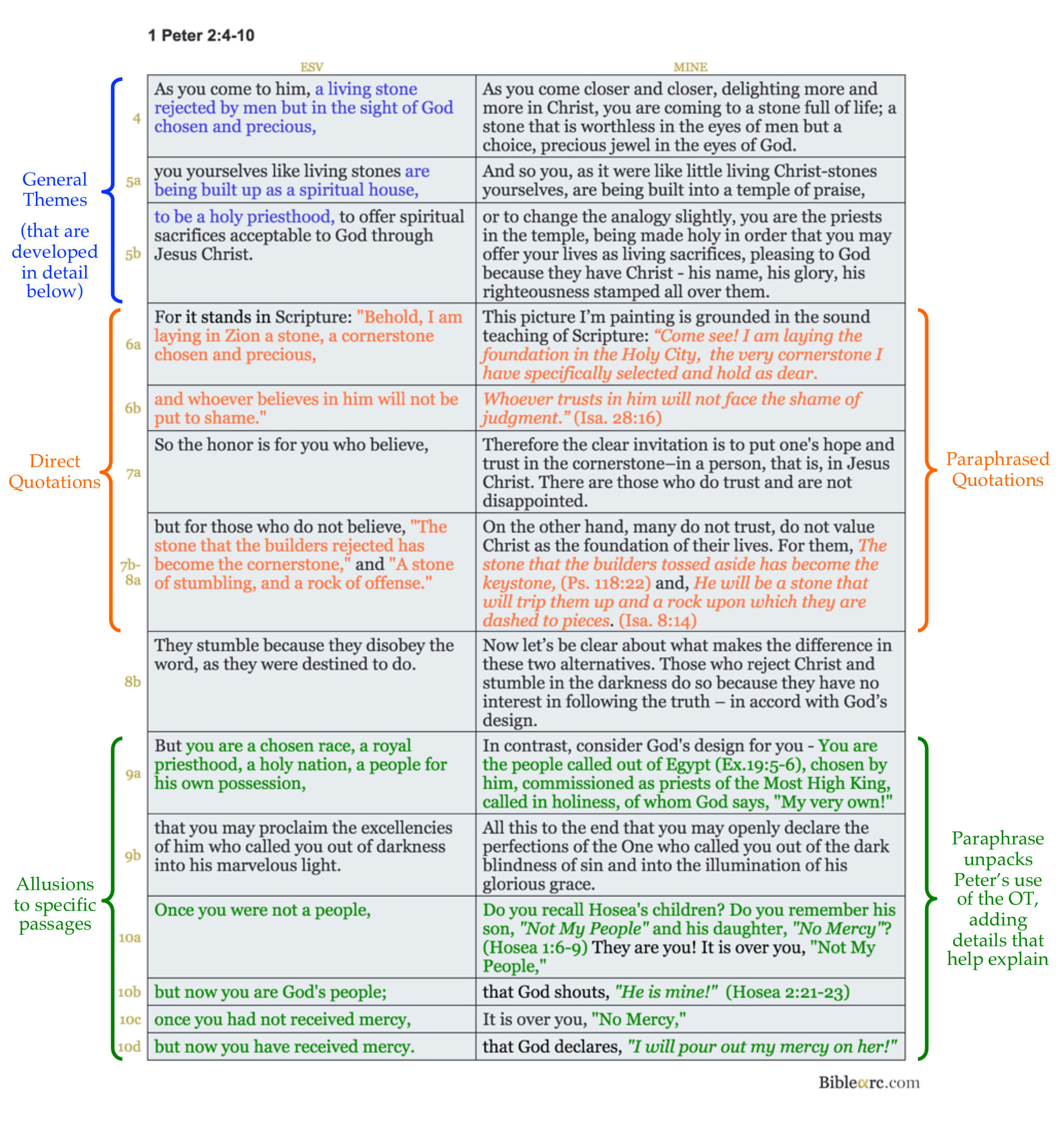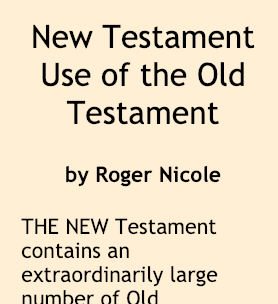Lesson 8 | What about...? Dealing with special cases
Encountering the Old Testament in the New

The entire message of the new covenant gospel is so deeply anchored in the Old Testament story—its themes, categories, characters, and events—that the New Testament writers frequently point back to the Old Testament and bring these elements forward. Their use of the Old Testament includes direct quotations, clear allusions to specific passages, referencing persons and general themes, and simply borrowing familiar terms and phrases. Concerning the sheer volume of Old Testament quotations, Roger Nicole writes,
The present writer has counted 224 direct citations introduced by a definite formula indicating the writer purposed to quote. To these must be added seven cases where a second quotation is introduced by the conjunction “and,” and 19 cases where a paraphrase or summary rather than a direct quotation follows the introductory formula. We may further note at least 45 instances where the similarity with certain Old Testament passages is so pronounced that, although no explicit indication is given that the New Testament author was referring to Old Testament Scripture, his intention to do so can scarcely be doubted. Thus a very conservative count discloses unquestionably at least 295 separate references to the Old Testament. These occupy some 352 verses of the New Testament, or more than 4.4 per cent. Therefore one verse in 22.5 of the New Testament is a quotation.
Attempting to count allusions to the Old Testament is much more difficult for a variety of reasons, but Nicole, recognizing this number could be in the thousands, goes on to say,
It can therefore be asserted, without exaggeration, that more than 10 percent of the New Testament text is made up of citations or direct allusions to the Old Testament. The recorded words of Jesus disclose a similar percentage. Certain books like Revelation, Hebrews, Romans are well nigh saturated with Old Testament forms of language, allusions and quotations.
So then, how should we handle these references to the Old Testament when we encounter them? This question has received a great deal of attention in recent biblical scholarship and many new resources are available for both the scholar and layman alike. For our purposes, I offer the following strategies for carefully reading New Testament passages that either quote or make direct allusion to a specific Old Testament text:
- Identify the specific OT passage being referenced. If you are not sure of the OT passage, turn on the “show cross-references” display option in the Read Module. This will provide direct links to the OT texts.
- Go to the OT passage and carefully read the immediate and broader contexts. Seek to discern the meaning of the passage in its own context, using the same methods of Bible study we have already employed.
- Carefully discern the NT author’s use of the OT text. This may include, but is not limited to the following common uses:
a. A prophecy directly fulfilled
But as he considered these things, behold, an angel of the Lord appeared to him in a dream, saying, 'Joseph, son of David, do not fear to take Mary as your wife, for that which is conceived in her is from the Holy Spirit. She will bear a son, and you shall call his name Jesus, for he will save his people from their sins.' All this took place to fulfill what the Lord had spoken by the prophet: 'Behold, the virgin shall conceive and bear a son, and they shall call his name Immanuel' (which means, God with us). —Matthew 1:20-23 ESV
b. An analogy drawn
Tell me, you who desire to be under the law, do you not listen to the law? For it is written that Abraham had two sons, one by a slave woman and one by a free woman. But the son of the slave was born according to the flesh, while the son of the free woman was born through promise. Now this may be interpreted allegorically: these women are two covenants. One is from Mount Sinai, bearing children for slavery; she is Hagar. Now Hagar is Mount Sinai in Arabia; she corresponds to the present Jerusalem, for she is in slavery with her children. But the Jerusalem above is free, and she is our mother. —Galatians 4:21-26 ESV
c. Specifically, an analogy to Christ
Then some of the scribes and Pharisees answered him, saying, 'Teacher, we wish to see a sign from you.' But he answered them, 'An evil and adulterous generation seeks for a sign, but no sign will be given to it except the sign of the prophet Jonah. For just as Jonah was three days and three nights in the belly of the great fish, so will the Son of Man be three days and three nights in the heart of the earth.' —Matthew 12:38-40 ESV
d. A comparison made
The men of Nineveh will rise up at the judgment with this generation and condemn it, for they repented at the preaching of Jonah, and behold, something greater than Jonah is here. The queen of the South will rise up at the judgment with this generation and condemn it, for she came from the ends of the earth to hear the wisdom of Solomon, and behold, something greater than Solomon is here. —Matthew 12:41-42 ESV
e. As the basis or ground of instruction
For I am not ashamed of the gospel, for it is the power of God for salvation to everyone who believes, to the Jew first and also to the Greek. For in it the righteousness of God is revealed from faith for faith, as it is written, 'The righteous shall live by faith,' —Romans 1:16-17 ESV
Concerning paraphrasing such passages,
- Use all of the tools and principles previously covered to accurately, appropriately paraphrase the OT quotation. Take care to be consistent with the OT context of the quote.
- Use your paraphrase to helpfully unpack the author’s use of the OT, even bringing in additional details from the OT context if necessary.
In the example below, Peter references the Old Testament in at least three ways, which I have highlighted on the left margin. You can then see how I have handled these references in my paraphrase.

Here is a link to short article that you may find helpful on this subject:

